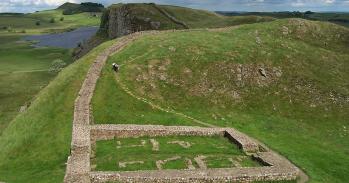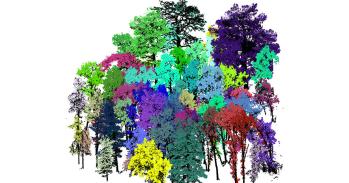
Stratospheric clouds over the Arctic may explain the differences seen between the polar warming calculated by climate models and actual recordings, according to researchers from the University of Cambridge and UNSW Sydney.
Stratospheric clouds over the Arctic may explain the differences seen between the polar warming calculated by climate models and actual recordings, according to researchers from the University of Cambridge and UNSW Sydney.
Our study shows the value of increasing the detail of climate models where we can
Deepashree Dutta
The Earth’s average surface temperature has increased drastically since the start of the Industrial Revolution, but the warming effect seen at the poles is even more exaggerated. While existing climate models consider the increased heating in the Arctic and Antarctic poles, they often underestimate the warming in these regions. This is especially true for climates millions of years ago, when greenhouse gas concentrations were very high.
This is a problem because future climate projections are generated with these same models: if they do not produce enough warming for the past, we might underestimate polar warming – and therefore the associated risks, such as ice sheet or permafrost melting – for the future.
“During my PhD, I was drawn to the fact that the climate models we are using do not represent the magnitude of warming that happens in the Arctic,” said lead author Dr Deepashree Dutta from Cambridge’s Department of Geography, who carried out the work during her PhD at UNSW. “At the same time, we knew that the majority of these models do not represent the upper layers of the atmosphere very well. And we thought this might be a missing link.”
The team turned their focus to a key atmospheric element that is missing in most models — polar stratospheric clouds — and found that they can explain a large part of the missing warming in models.
Their results, published in the journal Nature Geoscience, show that there is still much to learn about the climate of the past, present and future.
Climate models are computer simulations of our global climate system that are built using our theoretical understanding of how the climate works. They can be used to recreate past conditions or predict future climate scenarios.
Climate models incorporate many factors that influence the climate, but they cannot include all real-world processes. One consequence of this is that generally, climate models simulate polar climate change that is smaller than actual observations.
“The more detail you include in the model, the more resources they require to run,” said co-author Dr Martin Jucker from UNSW. “It’s often a toss-up between increasing the horizontal or vertical resolution of the model. And as we live down here at the surface of the earth, the detail closer to the surface is often prioritised.”
In 1992, American paleoclimatologist Dr Lisa Sloan first suggested that the extreme warming at high latitudes during past warm periods may have been caused by polar stratospheric clouds.
Polar stratospheric clouds form at very high altitudes (15-25 km above the Earth's surface), and at very low temperatures (over the poles). They are also called nacreous or mother-of-pearl clouds because of their bright and sometimes luminous hues, although they are not normally visible to the naked eye.
These polar stratospheric clouds have a similar effect on climate as greenhouse gases – they trap heat that would otherwise be lost to space and warm the surface of the Earth.
“These clouds form under complex conditions, which most climate models cannot reproduce. And we wondered if this inability to simulate these clouds may result in less surface warming at the poles than what we’ve observed in the real world,” said Dutta.
Thirty years after Sloan’s research, Dutta wanted to test this theory using one of the few atmospheric models that incorporates polar atmospheric clouds, to see if it might explain the disparities in warming between observational data and climate models.
“I wanted to test this theory by running an atmospheric model that includes all necessary processes with conditions that resembled a time period over 50 million years ago, known as the early Eocene. It was a period of Earth’s history when the planet was very hot and the Arctic was ice-free throughout the year,” said Dutta.
The Eocene was also a period characterised by high methane content, and the position of continents and mountains was different to today.
“Climate models are far too cold in the polar regions, when simulating these past hot climates, and this has been an enigma for the past thirty years,” said Jucker. “The early Eocene was a period in the Earth’s climate with extreme polar warming, so presented the perfect test for our climate models.”
The team found that the elevated methane levels during the Eocene resulted in an increase in polar stratospheric cloud formation. They found that under certain conditions, the local surface warming due to stratospheric clouds was up to 7 degrees Celsius during the coldest winter months. This temperature difference significantly reduces the gap between climate models and temperature evidence from climate archives.
By comparing future simulations to simulations of the Eocene, the researchers also discovered that it isn’t just methane that was needed to produce polar stratospheric clouds. “This is another key finding of this work,” said Dutta. “It’s not just methane, but it's also the Earth’s continental arrangement, which plays an important role in forming these stratospheric clouds. Because if we input the same amount of methane for our future climate, we do not see the same increase in stratospheric clouds.”
The research has provided some of the answers to questions about the climate of the deep past, but what does that mean for future projections?
“We found that stratospheric clouds account for the accelerated warming at the poles that is often left out of our climate models, and of course this could potentially mean that our future projections are also not warm enough,” said Jucker. “But the good news is that these clouds are more likely to form under the continental arrangement that was present tens of millions of years ago, and is not found on Earth now. Therefore, we don’t expect such large increases in stratospheric clouds in the future.”
This new research has not only helped to provide a piece of the puzzle as to why temperature recordings in the Arctic are always warmer than climate models – it has also provided new insights into the Earth’s past climate.
“Our study shows the value of increasing the detail of climate models, where we can,” said Dutta. “Although we already know a lot about these clouds theoretically, until we include them in our climate models, we won’t know the full scale of their impact.”
Reference:
Deepashree Dutta et al. ‘Early Eocene low orography and high methane enhance Arctic warming via polar stratospheric clouds.’ Nature Geoscience (2023). DOI: 10.1038/s41561-023-01298-w
Adapted from a UNSW press release.

The text in this work is licensed under a Creative Commons Attribution-NonCommercial-ShareAlike 4.0 International License. Images, including our videos, are Copyright ©University of Cambridge and licensors/contributors as identified. All rights reserved. We make our image and video content available in a number of ways – as here, on our main website under its Terms and conditions, and on a range of channels including social media that permit your use and sharing of our content under their respective Terms.




